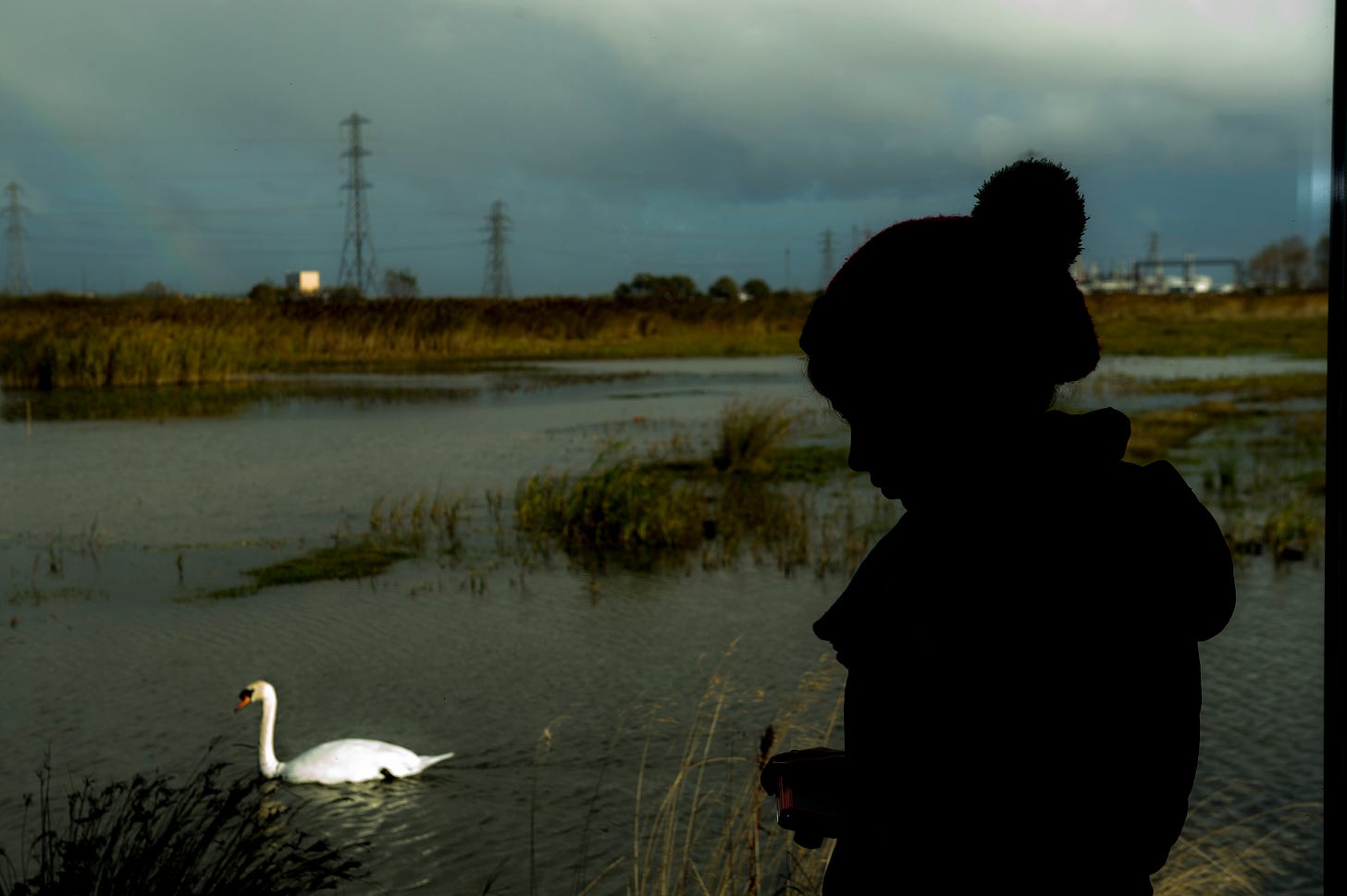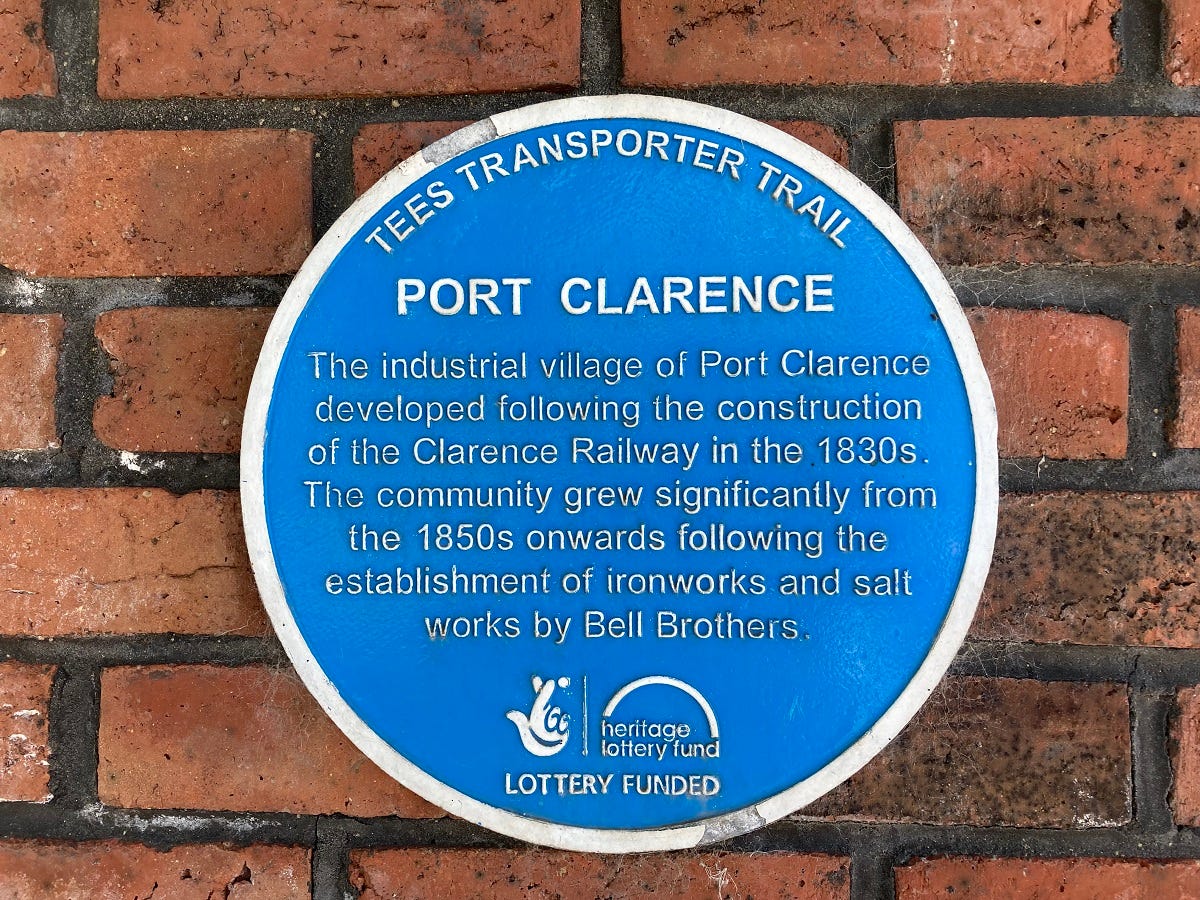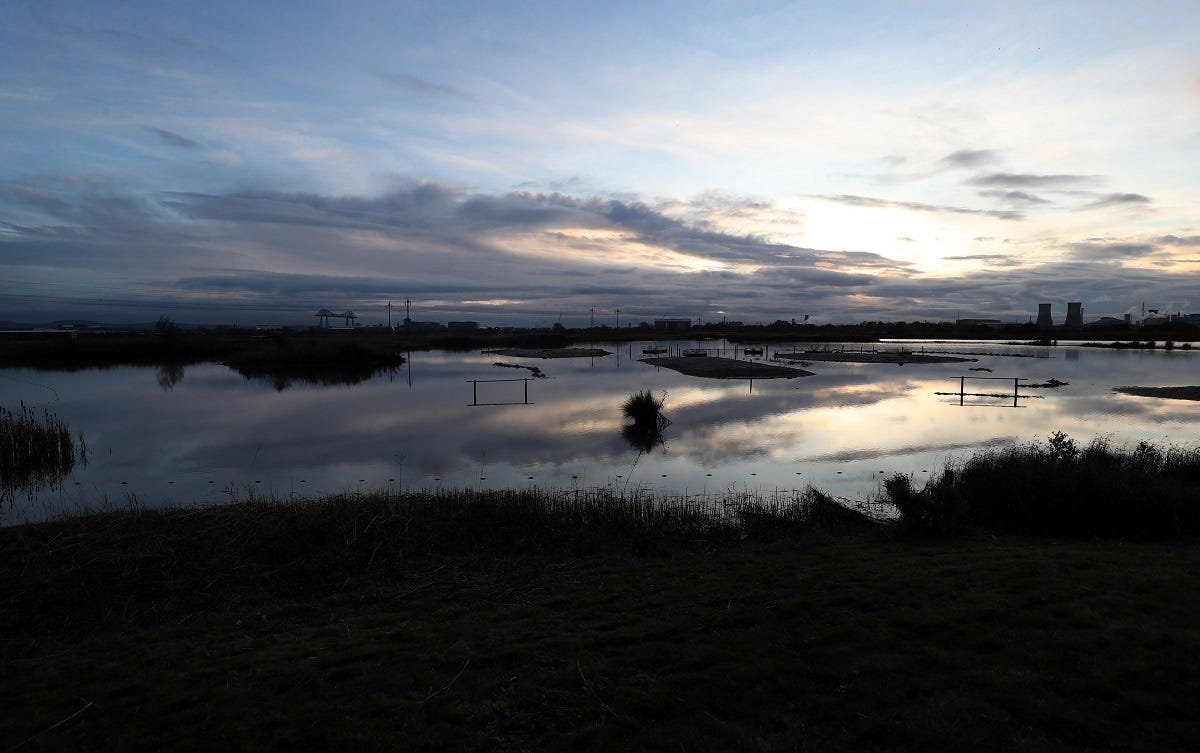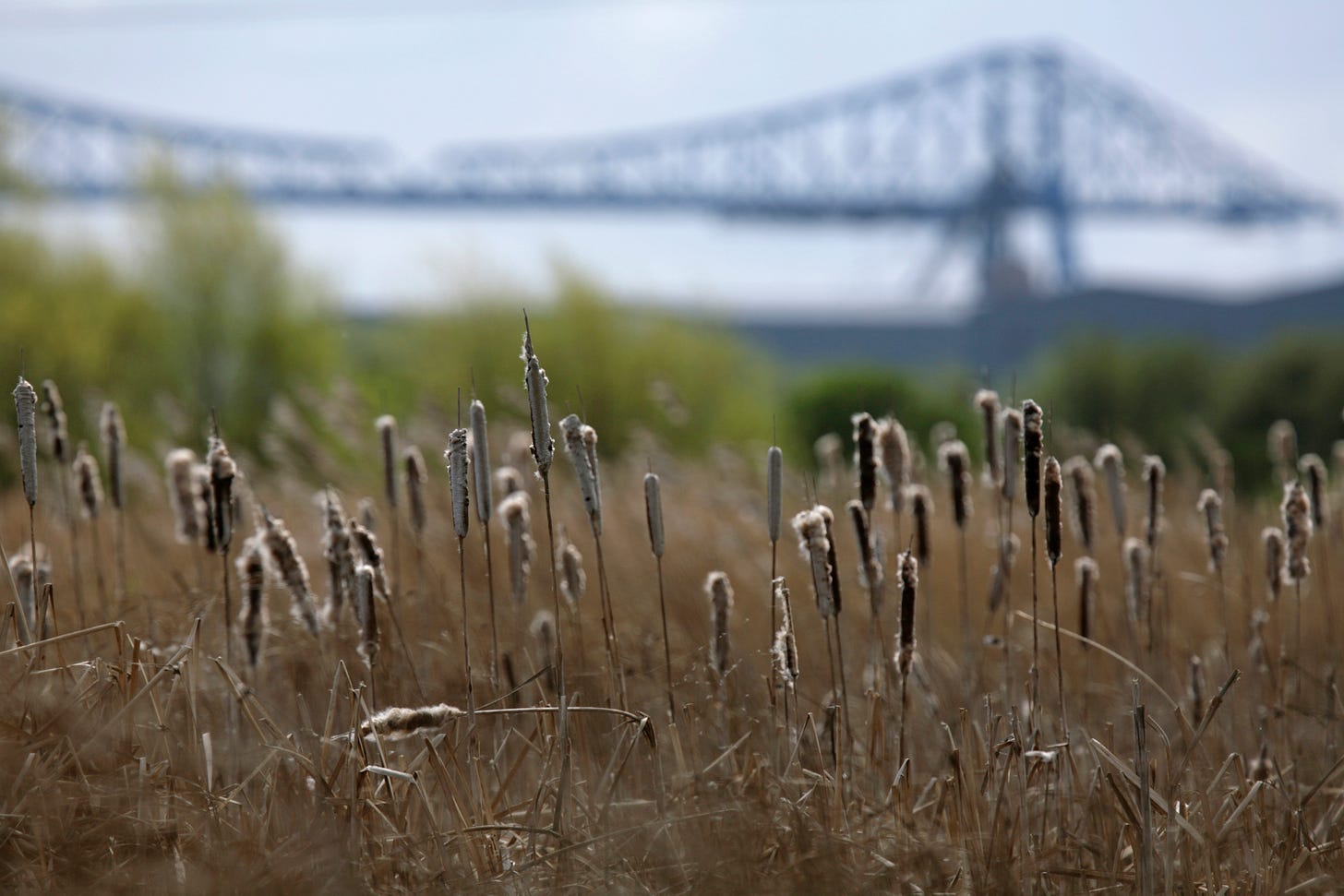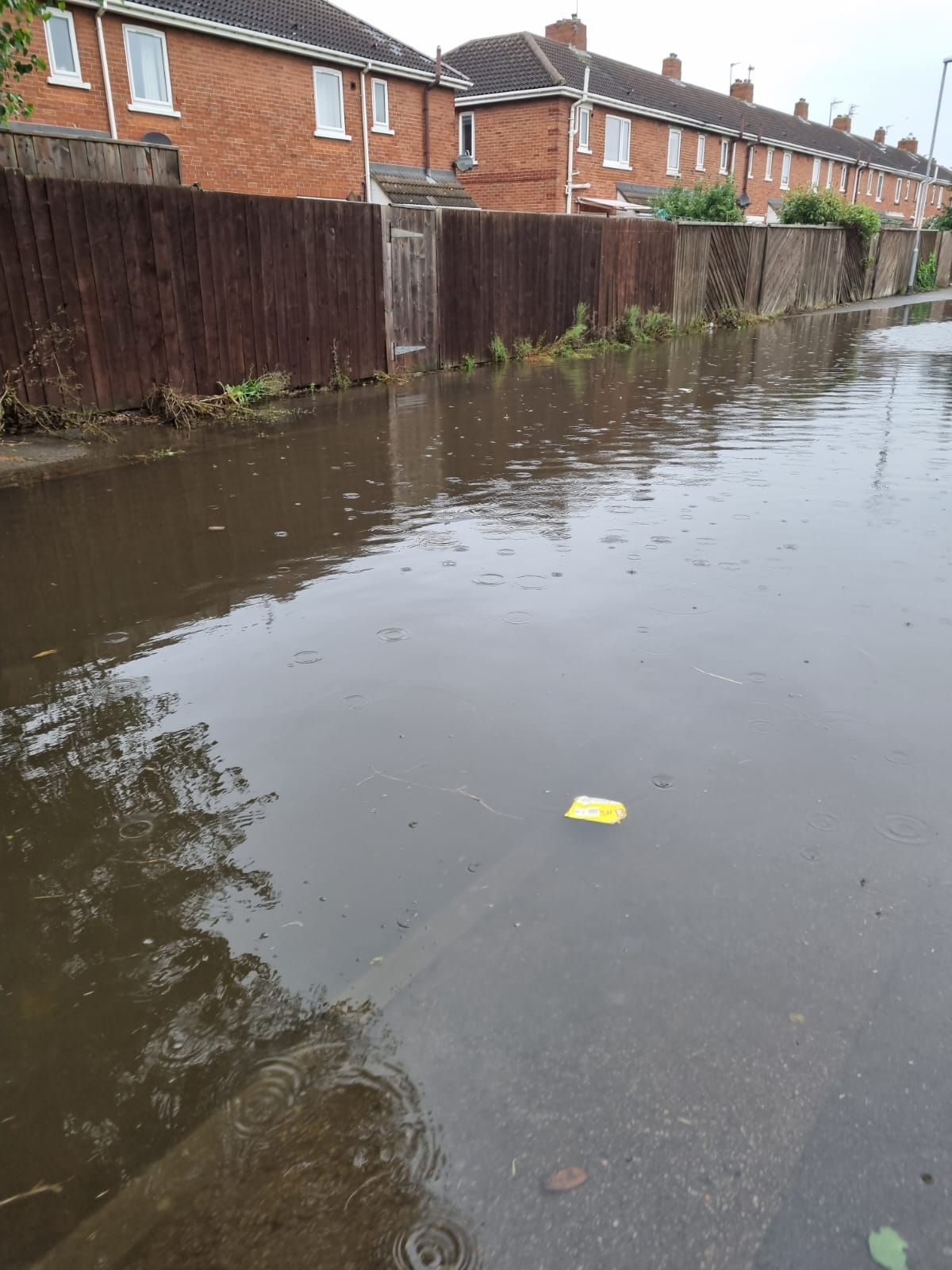Wildlife, industry, community - Teesside project to protect all three from flooding
A multi-million pound environmental project on the Tees Estuary aims to tackle flood risks, boost biodiversity and support the area’s economy – but can it restore the faith of the local communinty
By Sarah Sinclair, first published 10 April 2024
The first time Fred Forth’s house flooded was 1996.
In August 2023 Port Clarence was hit by its fourth flooding event since Fred moved into his home on Fieldview Close, 35 years ago.
It was believed to be caused by an issue with the flap valve on the pumps which were designed to keep the water levels down. Forth recalls the sewage coming up through the drains and floorboards.
“You get flooded once and they say it won’t happen again. Four times later and I feel really stupid for staying here,” says Forth, who is still living upstairs while the damage is repaired.
“I’ve been here 35 years and 27 of those I have been looking at tide times and rainfall.”
Port Clarence is a small residential area on the banks of the Tees, where houses were originally built for workers of the local blast furnaces, which have long-since closed. Formerly an island, the area is surrounded by water and vulnerable to tidal and fluvial (river, streams) flooding, as well as the risks of sewer blockages and surface water.
The most significant flood in recent history was 2013, the result of a destructive combination of tidal surge, heavy rainfall and easterly winds which caused the river to burst its banks.
Maria Lacey, who moved to Port Clarence seven years ago and is now a town councillor for the Billingham South ward, says locals live with a degree of constant uncertainty, wondering when the next flood will hit.
Last August, properties were left without power for days while the source of the flood was identified. Many people were evacuated to the nearby town of Billingham and those who stayed say they had no access to sandbags.
“For two nights I didn’t sleep,” says Lacey.
“I had to make flasks of tea and coffee to take to vulnerable residents. I knew several people with stairlifts who couldn’t get upstairs after the electricity went out.
“I love living in Port Clarence, it’s a good community and if someone is struggling we help them out,” she says. “But we didn’t have a plan, we weren’t equipped. It’s a case of not being prepared.”
The “beautiful industrialisation” of Teesside
Until 1820 most of the land around Port Clarence, now covered in industrial complexes, was just water. Middlesbrough was a handful of farmhouses and the natural delta was home to thousands of species of wildlife.
But once ironstone was discovered in the Cleveland Hills, a “gold rush” began and the area became a hub for the iron and steel industry.
“From that time on, there wasn't any regard for the natural environment,” says Jeremy Garside, of Tees Valley Wildlife Trust.
“It went from being a natural area, to an area with around 30 blast furnaces.”
It is estimated that around 90% of the natural wetlands habitat was reclaimed between 1820 and 1980, as the Tees Estuary was transformed into one of the largest industrial complexes in the UK.
“At the time it was thought of as the ‘beautiful industrialisation’ of Teesside,” Paul Eckersley, project executive at the Environment Agency, explains.
“We’ve got historical evidence of ecologists referencing ‘great plans to remove these marshlands’. It was very much thought of as a positive thing, and no doubt it has had economic benefit, but that has been at massive detriment to the ecosystems in the area.”
Port Clarence
While the land is unrecognisable, the estuary remains an important site for wildlife and huge swathes of land fenced off between chemical plants allows bird populations to nest in peace.
“Nature's good at recovering from damage," says Garside. “Seals returned to the river in the 1980s and there are still international populations of ducks and wading birds using the remaining habitats.”
The result is a striking juxtaposition of towering concrete chimneys as the backdrop to serene wetlands. Over 200 different species have been spotted by bird watchers around the RSPB’s Saltholme Nature Reserve site, just a five minute walk from Port Clarence.
According to senior site manager, Chris Francis, over 20,000 birds visit the estuary over the winter months.
But industrialisation has also led to significant flood risks in the area, which are only set to increase with rising sea levels.
“Sea level rises are a massive threat to the area,” says Garside. “In the next 10 years what used to be a one-in-100 year flooding event will be a one-in-three year flooding event… It's important to both protect and restore areas for wildlife and alongside that to think about nature-based solutions to current problems.”
The balance between nature and industry
A new initiative hopes to address this delicate balance between nature and industry in a way that allows the area to adapt to climate change, as well as securing the future economic prosperity of Teesside.
With funding of more than £30 million, the Tees Tidelands programme is being led by the Environment Agency, with partners including Stockton-on-Tees Borough Council, the RSPB, the Canal & River Trust, Teesside Environmental Trust, Tees Rivers Trust, Natural England and Tees Valley Wildlife Trust.
Saltholme Nature Reserve. Credit: Environment Agency
It aims to create over 50 hectares of mudflats, saltmarsh and other valuable estuarine habitats, as well as reducing flood risk for homes and businesses, by realigning flood defences and removing tidal barriers at sites along the banks of the River Tees.
And one of the key projects will focus specifically on the challenges facing the community of Port Clarence.
Stockton-on-Tees Borough Council received a £7 million grant from Defra’s Flood and Coastal Resilience Programme to carry out its Tees Tidelands Port Clarence initiative, which will see the creation of a “habitat banking system” to ensure developers meet their Biodiversity Net Gain targets in the area.
As of February 2024,10% Biodiversity Net Gain (BNG) became mandatory on any new development under the Environment Act, aiming to ensure that habitats are left in a better state.
A demonstrator site at Port Clarence will be used as a habitat bank from which developers can purchase “biodiversity credits” to compensate for habitat losses elsewhere in the estuary.
A spokesperson for Tees Environmental Trust told The Teesside Lead: “The demand for Biodiversity Credits on Teesside will enable industry to successfully realise their objectives to recycle the money into further nature conservation and habitat creation projects on Teesside.”
Port Clarence: a community which feels forgotten
Port Clarence has been identified as an “ideal location” for the demonstrator site due to its close proximity to Saltholme nature reserve and the strong links with TET which owns the land.
But it is also hoped that the project will generate interest among the community and improve engagement with flood resilience measures.
According to the Environment Agency, takeup of its flood warning service is extremely low among residents in Port Clarence, with just 39% registered compared to an average of 79% in the north-east as a whole.
“There are a lot of challenges in the area,” says Eckersley. “Broadly speaking, it's a deprived community and that can often go hand-in-hand with less access to green and blue spaces.”
It's on a single bus route and has become increasingly isolated since the Transporter Bridge, which directly linked the area to Middlesbrough, was taken out of operation.
Residents feel disconnected from services and frankly, forgotten about.
The Tees Transporter bridge. Credit: Andy Hay RSPB
“People in Port Clarence feel like it’s a dumping ground,” says Lacey. “Like if you live there nobody cares about you… We get frustrated because there’s no communication.”
When the last flood hit, Lacey didn’t know who to contact or which authority was responsible.
“The frustration for me as a councillor was that I didn’t get any warning and I didn’t know who to call,” she says.
Having now been trained as a flood warden for the area, Lacey is hopeful that the community will be better prepared for future events.
“We have been working with the Environment Agency to make sure everyone is signed up to the flood warning scheme and we're drawing up a plan so if it happens again we have a list of numbers to ring,” she says.
“There is a fund for torches and batteries in case the electric goes, whereas I didn’t have any of that before. The council has been very helpful in getting us those.”
But Lacey adds: “One thing we would like is a bit more open communication.”
Eckersley says ideas for community engagement in the area are “endless and varied”.
“We want to help the community build better connections with the RSPB reserve, to create better understanding around the risk of flooding and discover the joy of living next to a river and the benefits that brings to mental health,” he says.
“Trying to reconnect people with the estuary is one of the primary aims of the whole programme.”
But for some, the damage has already been done.
“It’s too little too late,” says Forth. “Once my house gets done up, I’ll be tempted to sell up and move on. It feels to me that other communities have been prioritised over ours.”
Port Clarence flooding in 2023.
A spokesperson for Stockton-on-Tees Borough Council said: “This vital work will reduce risk and increase resilience to flooding, but importantly it also supports the council’s Environmental Sustainability and Carbon Reduction Strategy which includes the restoration of natural habitats – many of which have been lost due to historical human intervention.
“Once complete they will further protect residents’ homes and businesses as well as attract wildlife to thrive and the community to enjoy.
“We continue to work with partners such as the Environment Agency to reduce flood risks across the Borough including in Port Clarence and plans are underway to carry out engagement work in this area."
The Environment Agency encourages those who live in areas at risk of flooding to check their flood risk online, sign-up to flood warnings and take appropriate action when flooding is forecast by visiting How to plan ahead for flooding - Check for flooding - GOV.UK (check-for-flooding.service.gov.uk) or by calling by calling Floodline on 0345 988 1188.




